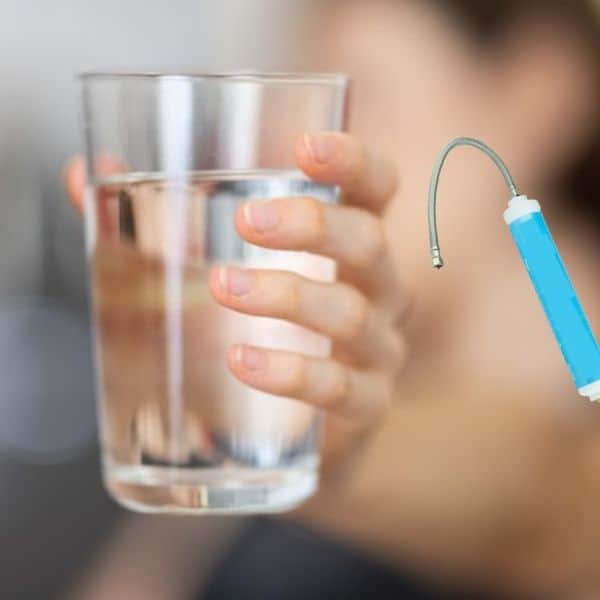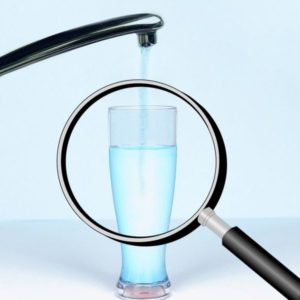4 Effective Ways of Removing Microplastics from Tap Water
Here are a few ways you can use to remove microplastics from tap water.
Electrolytic Oxidation
Electrolytic Reduction is a relatively new and environment-friendly way to remove plastic from the drinking water supply. It breaks down these microplastics into carbon dioxide and water. You don’t have to add any chemicals to water samples.
Electrolytic oxidation employs the use of reusable electrodes to generate hydroxyl radicals. These radicals can attack and eliminate the smallest microplastics.
Electrolytic oxidation is environmentally friendly and removes up to 89% of polystyrene particles. It does not produce toxins while removing pollutants effectively.
Coagulation for Removing Plastic Particles
Coagulation is the best method for eliminating plastic contamination from waster water. This wastewater treatment is effective for emerging contaminants present in ocean water.
There are two types of coagulants used to eliminate plastic pollution, i.e., inorganic and organic coagulants.
Inorganic coagulants are more effective than organic ones. They solidify the microplastics into large particles visible to the naked eye. And then you can remove this plastic waste.
Distillation for Bottled Water
Distillation is one of the methods to make bottled water and tap water clean. This process can remove microplastics because of the difference in the boiling point of plastic and tap water. Water boils first, leaving behind the microplastics from tap water. Plastic-free steam is then converted into liquid form again by cooling.
Ceramic Filters
There is a wide range of filtration processes that remove microplastics from water. The best filter among this variety of filters is a ceramic filter. They have very tiny pores of 0.5 microns. Hence, they filter tiny pieces of plastic particles easily.
What Are Micro-Plastics?
Microplastics are tiny pieces of plastics. These are usually less than 5 millimeters in size. The water of oceans and rivers is contaminated by plastics which leads to microplastic pollution. They are not biodegradable. Hence they stay in our environment forever.
They come in different shapes and sizes. But researchers have declared particles of 0.2 inches of plastics to be harmful to marine life and oceans.
These materials are made of hydrogen and carbon atoms arranged as polymers. Other chemicals present with microplastics are Polybrominated diphenyl ethers (PBDEs), Phthalates, and Tetrabromobisphenol A (TBBPA).

Source of Microplastics Contamination
Diverse research has pinpointed several sources of microplastics contaminants, including plastic microfibres. The clothes industry uses synthetic fibers like nylon. When we wash these clothes, tiny pieces from the fabric get mixed into the wastewater. From there, they enter the food chain and environment.
There are many sources of microplastic particles, including the clothes industry, tires, cosmetics, and wastewater or sewage treatment plants. The fishing industry also adds microplastic particles to the ocean water by using netting to catch fish.
Orb media research reports that microplastics found in bottled water is about 93%. Microplastics found in facial masks also cause plastic pollution after discarding. The cosmetic industry adds microbeads type of microplastics and causes microplastic pollution.
There are two types of microplastics. Primary ones enter the environment directly in the form of plastic pallets, microbeads from personal care products, etc.
While the secondary ones are produced as a result of the withering of large plastic structures
Symptoms and Dangers of Microplastics
Recent studies have identified dire consequences of microplastic pollution on the human body and animals. Humans can have neurotoxicity, metabolic disturbances, and risk of cancer due to microplastics. They can leach dangerous chemicals and damage the organs of humans.
The BPA can even affect reproduction by decreasing fertility. They weaken the immune system as well. When your immune system is weak, you are prone to many infections and diseases. Nervous system diseases are quite common due to microplastics in tap water and drinking water.
Microplastics not only affect humans but the environment and marine life as well. The birds, fish, and many other animals like invertebrates of sea life ingest the microplastics in water.
They obstruct their respiratory canals and also cause toxicity in their bodies. Their food intake becomes low, and also the microplastics flow through the whole food chain and disturb the environment.
Microplastics not only enter alone in the body but bring pathogens and heavy metals along with them. They become adhered to the surface of water bodies and hinder light entry.
If your body has microplastics in concentrations higher than suggested by orb media, then you may experience gastric problems. Other harmful effects include swelling of the windpipe, acidity, dementia, inflammations, and blood problems like a decrease in blood cells.
Does Water Filter Remove Microplastics?
Water filters with a reverse osmosis system remove microplastics with efficiency because of their special mechanism. The membrane of a reverse osmosis system has pores of 0.00001 micrometers. Microplastics are quite larger than this size, and they cannot pass through this membrane.
When water is pushed through such a membrane, it leaves the contaminants on one side and reaches as pure water on the opposite side of the membrane.
Based on pore size filtration, microplastic water filters can be of the following types:
Microfiltration processes remove microplastics of smaller sizes. They have a membrane that filters plastic particles larger than 0.1-10 microns in size from contaminated water.
Ultrafiltration works just like microfiltration, except their pore size is even smaller than a micro water filter that is 0.1-001 micrometer.
Nano filters are the finest filters that filter micro-plastics of almost 0.002 micrometers. Their pore size is around 0.001 micrometer.
According to researchers, these filtration methods remove microplastics from tap water and bottled water.
Which Water Filters Remove Microplastics?
Reverse Osmosis Filters
Reverse osmosis system filters effectively turn wastewater into drinkable clean water. Their function is dependent on the semipermeable membrane. This membrane allows only a few contaminants to pass through it. It has very tiny pores so, microplastics cannot pass through it.
There are many types of microplastic water filters with an RO system. Reverse osmosis systems are multistage filtration systems. They pass water through the different stages. Thus, making the tap water suitable for your health.
RO systems soften the drinking water by removing heavy metals and desalinating it. The membrane separates the clean water and microplastics along with other impurities. So, any water filter using the reverse osmosis method to clean the water is beneficial and effective.
Carbon Water Filters
Carbon water filters are made of carbon in a compressed form. Many water filters used these carbon blocks for pre-filtering the water. But some water filters solely use this method for purifying the water.
They act by adsorbing the contaminants on the surface of water filters. Microplastics are one of such contaminants that carbon filters adsorb effectively from tap water to make it pure. Carbon filters also come in the form of loose blocks. These loose pieces are joined together to make one carbon filter. They effectively remove chlorine and microplastics.
They effectively reduce the concentration of microplastics in tap water. They adsorb not microplastics but all other impurities that are attached to plastic particles. So get a water filter that has both granular carbon and active carbon in them for effectively filtering microplastics.

Refrigerator Water Filters
Refrigerator water filters are so handy and efficient for providing clean drinking water. If your water has impurities like microplastics, then get a refrigerator water filter with activated carbon. You have to get this filter according to the type of fridge you have because not every kind fits perfectly. So check the compatibility before buying the refrigerator water filter.
They are capable of removing all kinds of contaminants, including chlorine and microplastics. This feature enhances the efficiency of these filters. They can filter up to 300 gallons of drinking water and remove 60+ contaminants.
FAQs on How to Remove Microplastics From Water
Does boiling water remove microplastics?
No! Boiling isn’t effective against microplastics. Even if you boil water, it will not decrease the concentration of microplastics in the water. It is effective against bacteria and certain chemicals only but not polymers like microplastics.
How do I know if my house is contaminated with microplastics?
If your house has a water supply contaminated with microplastics, you will smell a pungent smell while boiling this water. The water will be murkier and have a bitter taste. That is how you will know that your house has microplastics.
Does Zero Water remove microplastics?
Zero Water filters have a super-efficient system of five stages of filtration. This filer removes microplastics with the highest efficiency. Zero water can remove up to 95% of microplastics from the water. This is because they have an ion-exchange system that filters water in multiple steps.
Conclusion
We hope that our guide on how to remove microplastics from the water is helpful for you. Microplastics are like toxins, and your water should be plastic-free. And our recommended filters are the best at performing this job. Try any of them, and let us know about your experience in the comments.
